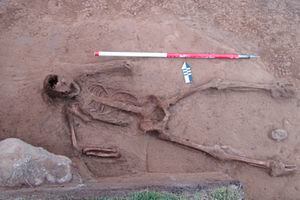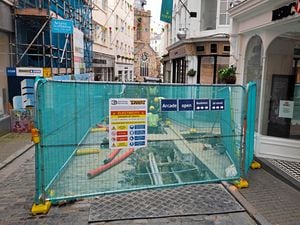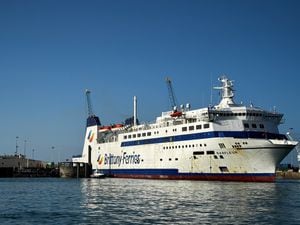Skeleton excavated on islet off west coast could be monk
A MYSTERIOUS body had been excavated from a tiny islet off the west coast.

While the remains discovered on Chapelle Dom Hue are thought to be those of one of the monks who lived on nearby Lihou, quite why he was buried on this island is one mystery that archaeologists are hoping to solve.
Another puzzle is why the body has no hands.
The island has already given local archaeologists something to scratch their heads over, with the discovery of a dismembered yet complete porpoise corpse there earlier this year.
But States archaeologist Dr Phil de Jersey said he has come to the conclusion that the porpoise was cut up and buried there in an effort to preserve it for food.
Previously, the island had yielded only the remains of pottery, but it was on one of his regular visits that Dr de Jersey spotted what he took to be a foot bone protruding from soil near the coast.
On a return visit recently, more of the bone was exposed and so a dig took place which revealed the almost complete skeleton.
After consulting with Environment & Infrastructure, it was decided to excavate the remains and bring them back to the Museum Service’s St Peter Port offices where work will now get under way to clean them and try to learn as much about them as possible.
While the working theory is that this is a 14th or 15th century body that belonged to a monk, the presence on the torso of buttons suggests that this was a relatively important person, said Dr de Jersey.
The body was found buried lying along a roughly east-west line, which indicated a Christian burial, he added.
Apart from the hands, the rest of the body was intact and suggested a male about 5ft tall.
Dr de Jersey said his partner Jenny Cataroche was a bones specialist and would carry out the clean-up: ‘She’s going to be taking time off work because she’s so excited about it,’ he said.
The teeth could yield information about the person’s diet, while a large hole in the skull could have been caused by vermin, but only closer inspection will yield the answers.
A sample will be sent away for DNA analysis to get an accurate date for the remains.
Once the work has been completed, Dr de Jersey said the body would be reburied, probably in St Saviour’s.
Although it is being assumed that the body is male, the truth will be revealed once the bones have been cleaned and studied more closely.
But it is the lack of any hand bones which is perhaps the greatest mystery.
‘This is more surprising because the toes are surprisingly well-preserved,’ he said
And as for the identity of the person, and why he was singled out for burial in this spot, that may never be known for certain.
Dr de Jersey speculated that perhaps the name of the island itself is a clue: it refers to a chapel named after a monk, Dom Hue, so perhaps the remains are that of the monk himself. That is one question that may, however, never be answered.





